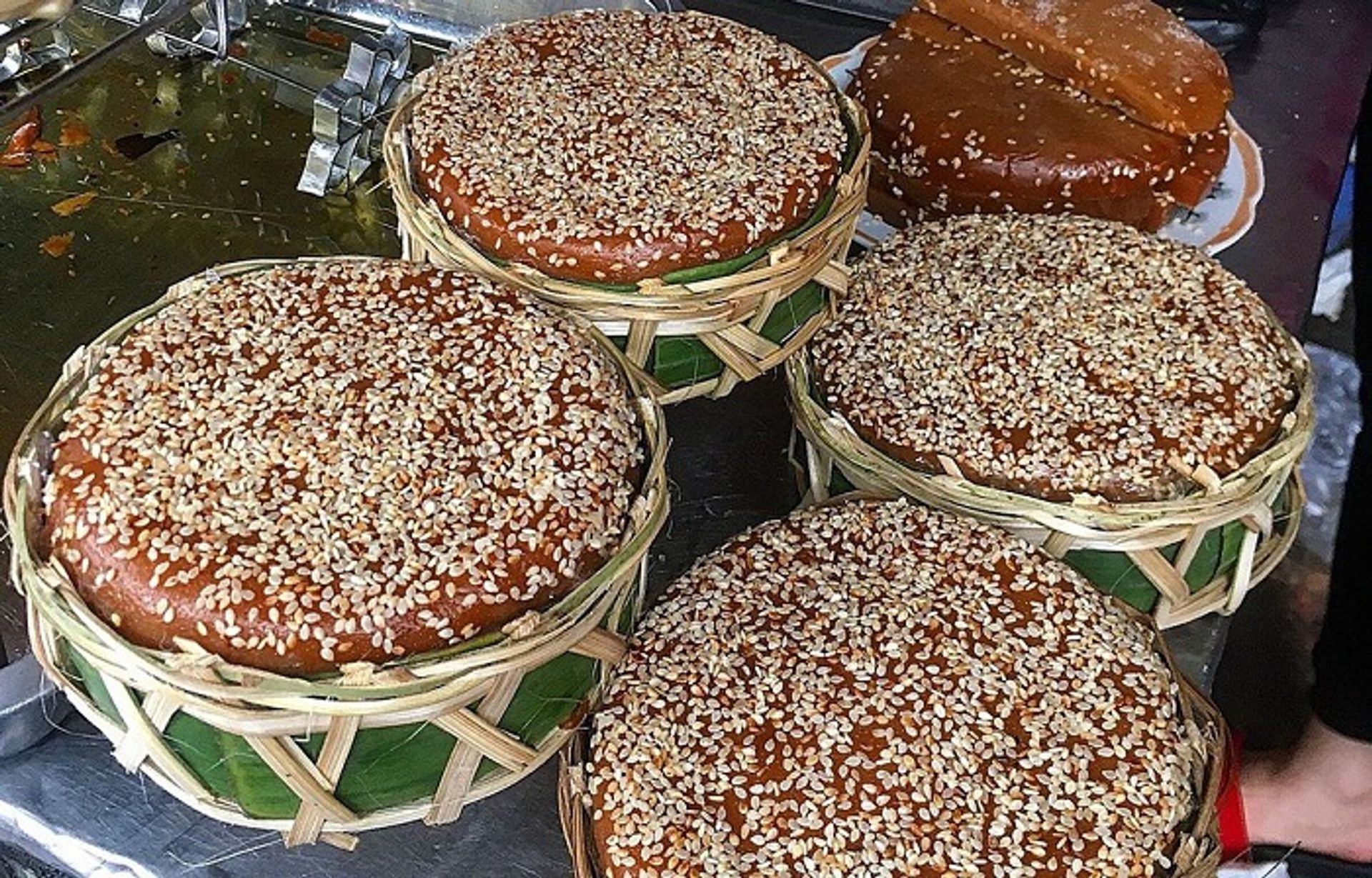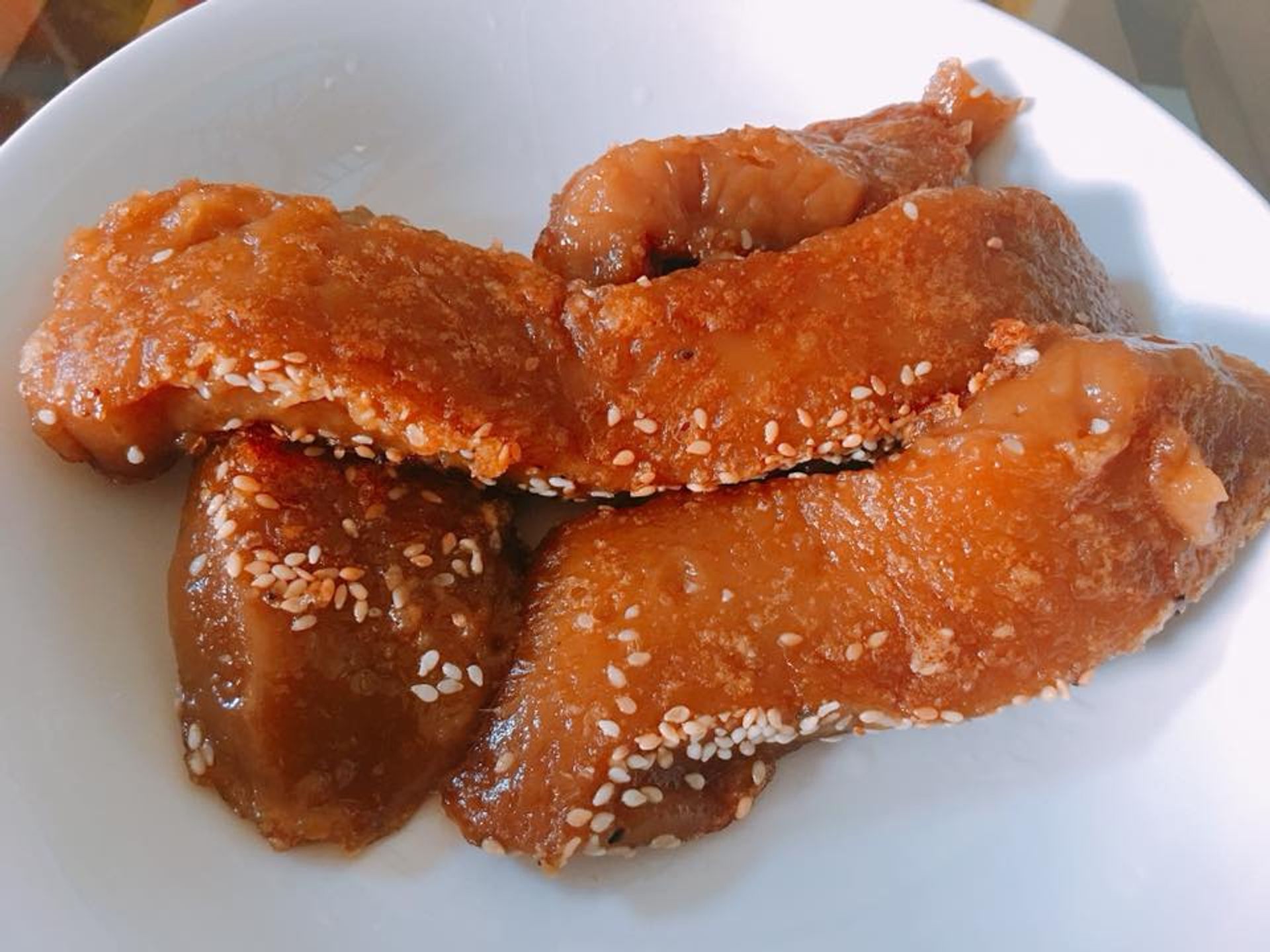Banh Tai is a unique dish prepared by the San Diu ethnic group in Quang Ninh. According to the stories of the old people, the San Diu people have a very good agricultural tradition. Banh Tai is also skillfully processed from cultivated and transplanted agricultural products. The round-shaped cake is not only a delicious dish but also represents the San Diu people’s belief in worshiping Heaven and Earth.
Usually, the traditional cake is made to worship or enjoy on special occasions such as holidays, Tet or festivals. Most commonly, the cake will be made on the occasion of the Lunar New Year and the beginning of the new spring. To make cakes, the San Diu people choose the best ingredients and rice grown in different seasons of the year. In order to make the cake more flavorful, the ingredients for the cake also include peanuts, sesame, old ginger, etc. First of all, delicious glutinous rice is put in a stone mortar to grind into a powder. Nowadays, it is easier to make cakes by grinding rice, but there are still many people who think that ground rice flour is not as good as hand pounded flour.
Talented cake has a round cylinder shape, color of cockroach wings, very clear and beautiful. Freshly steamed cakes are flexible and can be cut to eat immediately. The cake is fragrant with the delicious smell of rice, with the fleshy taste of peanuts, sesame, mixed with the smell of warm, fragrant ginger and sweet taste. Banh Tai can be kept for a long time, when you eat it, you can eat it with a knife and cut it into pieces.
-
Price: 10,000 VND/small piece
-
Address: Shops along the road going up to Tran Quoc Nghien temple (or Cua Ong temple), Cam Pha city, Quang Ninh
Source: Collected internet.
According to the ups and downs of the nation's history, Vietnamese customs and practices are constantly being innovated according to social trends. One of the oldest and most influential customs in history is the custom of chewing betel. This is a custom that dates back to the Hung King period and originates from the legend of Trau Areca and this custom has become a typical image of the brotherhood and love between husband and wife of Vietnamese people. Not only the custom of chewing betel, Vietnam also has another custom that was born in ancient times, which is the custom of welcoming the new year, also known as Tet - traditional Tet.
Vietnam's history began from 1 to 2 thousand years BC. Over many centuries with the Ly, Tran, Le, and Nguyen dynasties, from the mid-19th century, Vietnam became a French colony. After the August Revolution, the Democratic Republic of Vietnam was born. The Battle of Dien Bien Phu in 1954 marked the end of the French in the territory, but Vietnam was divided into two countries: the Democratic Republic of Vietnam in the North and the Republic of Vietnam in the South. After the events of April 30, 1975, Vietnam was unified and from July 2, 1976, officially named the Socialist Republic of Vietnam.
Religion in Vietnam is quite diverse, including Buddhism (both Mahayana, Theravada and some modified groups such as Hoa Hao, Tu An Hieu Nghia); Christianity (including Catholicism and Protestantism); endogenous religions such as Cao Dai; and some other religions (Hinduism and Islam). Different types of folk beliefs also have a lot of influence. The majority of Vietnamese people consider themselves non-religious, even though they still go to religious sites several times a year...
Folk theater has many forms and has existed for a long time such as Cheo singing, Tuong singing, water puppetry... and newer ones such as Cai Luong, folk opera. Cheo is a form of theatrical storytelling, using the stage and actors as a means of interacting with the public. The content of Cheo plays is taken from fairy tales and Nom stories, carrying profound realistic and ideological values, while also expressing Vietnamese ethnicity. Cheo stage is simple, with non-professional actors performing impromptu...

